Brian | Post-Docs | Graduate | Undergraduate | Alumni
Principal Investigator (PI) - Brian Munsky (he/him/his)
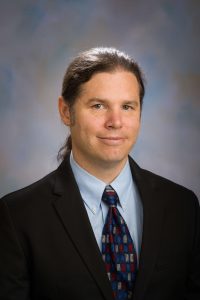
- (2020-Present) Associate Professor; Chemical and Biological Engineering; Colorado State University, Fort Collins CO
- (2014-2020) Assistant Professor; Chemical and Biological Engineering; Colorado State University, Fort Collins CO
- (2014-Present) Affiliate Professor; School of Biomedical Engineering; Colorado State University, Fort Collins CO
- (2016-Present) Keck Scholar; Colorado State University, Fort Collins CO
- (2010-2016) Research Scientist; New Mexico Consortium; Los Alamos NM
- (2013); Scientist II, Los Alamos National Laboratory; Los Alamos, NM
- (2010-2013); Richard P Feynman Distinguished Postdoctoral Fellow in Theory and Computing; Los Alamos National Laboratory; Los Alamos, NM
- (2008-2010); Director's Postdoctoral Fellow; Los Alamos National Laboratory; Los Alamos, NM
- Curriculum Vitae (Sept. 2017)
- B.S. (2000) Aerospace Engineering, Penn State
- M.S. (2002) Aerospace Engineering, Penn State
- Ph.D. (2008) Mechanical Engineering, UC-Santa Barbara [Dissertation (.pdf)]
- NIGMS Maximizing investigator Research Award (MIRA, R35): "Using Cellular Fluctuations and Computational Analyses to Probe Biological Mechanisms," Sponsored by HHS-NIH-National Institutes of Health (September 15, 2017 - August 31, 2022). PI.
- DTRA "Bet-hedging in Pathogens: Targeting Bacterial Persistence to Combat Infectious Disease," Sponsored by DOE-NNSA-Los Alamos National Laboratory. (January 17, 2017 - December 31, 2017), co-I.
- W. M. Keck Foundation Medical Research Area Grant, "Quantifying Multiplexed Real-Time RNA to Protein Translation in Live Cells", (July 1, 2016 - June 30, 2020), co-PI.
- NIH R25, "The q-bio Summer School", (Jan. 01 2012 - Dec. 31, 2016), co-PI.
- NSF/I2CAM Workshop Support Award ($25,000 in support), 2011, PI.
- Los Alamos National Laboratory Postdoctoral Distinguished Performance award, 2012
- SIAM Conference in the Life Sciences (LS10) Poster Award, 2010
- Leon Heller Postdoctoral Publication Prize in Theoretical Physics, 2010
- Richard P. Feynman Distinguished Postdoctoral Fellowship, 2010
- UCSB Department of Mechanical Engineering Best Ph.D. Dissertation for the 2007-2008 Academic Year, 2009
- Los Alamos National Laboratory Directors Postdoctoral Fellowship, 2008
- Best Presentation in Session, 27th American Controls Conference, 2008
- UCSB Student Travel Grant, 2007
- UCSB Department of Mechanical Engineering Graduate Research Fellowship, 2003
- UCSB Chancellor's Graduate Research Fellowship, 2003
- National Defense Science and Engineering Graduate Fellowship, 2001
- American Helicopter Society Vertical Flight Foundation Award, 1999 and 2000
- Penn State University Schreyer Ambassador Travel Grant, 1999
- Mary Ilgen Memorial Scholarship, 1999
- Schreyer Honors College Academic Excellence Award, 1996
Current Team Members
Post-Docs
Luis Aguilera
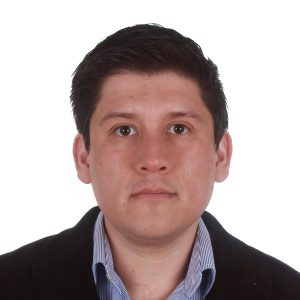
I am a postdoc in the group of Dr. Brian Munsky at CSU. The focus of my work is to develop high-throughput computational techniques to understand complex biological systems, such as viral infections and innate immune responses. I obtained my Ph.D. in Biomedical Engineering and Physics from the National Polytechnic Institute in Mexico.
Email: Luis.aguilera at colostate.edu
Publications:
- Aguilera LU, Galindo BE, Sánchez D & Santillán M (2012) What is the core oscillator in the speract- activated pathway of the Strongylocentrotus purpuratus sperm flagellum? Biophysical Journal 102: 2481– 2488.
- Aguilera LU & Rodríguez-González J (2014) Studying HIV latency by modeling the interaction between HIV proteins and the innate immune response. Journal of Theoretical Biology 360: 67–77.
- Aguilera LU, Zimmer C, Kummer U (2017). A New Efficient Approach to Fit Stochastic Models on the Basis of High-throughput Experimental Data Using a Model of IRF7 Gene Expression as Case Study. BMC Systems Biology. 11:26.
- Aguilera, LU, Rodríguez-González, J. (2019). Modeling the effect of tat inhibitors on HIV latency. Journal of theoretical biology, 473, 20-27.
- Lyon, K., Aguilera, LU, Morisaki, T., Munsky, B., Stasevich, T. J. (2019). Live-cell single RNA imaging reveals bursts of translational frameshifting. Molecular cell.
- Aguilera, LU, Bergmann, F. T., Dalmasso, G., Elmas, S., Elsässer, T., Großeholz, R., ..., Veith, N. (2019). Robustness of frequency vs. amplitude coding of calcium oscillations during changing temperatures. Biophysical chemistry, 245, 17-24.
- Aguilera, L., Raymond, W., Fox, Z. R., May, M. P., Djokic, E., Morisaki, T., Stasevich T.J., Munsky, B. (2019). Computational design and interpretation of live-cell, single-RNA translation experiments. PLoS Computational Biology 15 (10).
- Koch A., Aguilera L., Morisaki T., Munsky B., Stasevich T.J. (2020). Quantifying the dynamics of IRES and cap translation with single-molecule resolution in live cells. Nature Structural and Molecular Biology.
- Castaño-Arcila, Mauricio, Aguilera L., and Jesús Rodríguez-González. (2021). Modeling the intracellular dynamics of the dengue viral infection and the innate immune response. Journal of Theoretical Biology. 509:110529.
Linda Forero Quintero
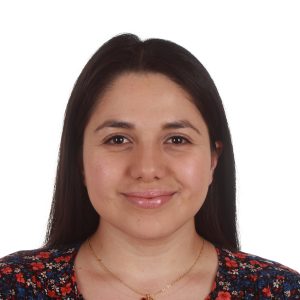
I obtained my Ph.D. in natural sciences in 2016 from the University of Kaiserslautern, Germany. During my Ph.D. research, I worked on Neurosciences and Brain Energy Metabolism. I characterized the role of monocarboxylate transporters (MCTs) during epileptiform activity using pH and Ca2+ imaging. Currently, I am a postdoctoral scholar at Colorado State University, working under the supervision of Dr. Brian Munsky and Dr. Tim Stasevich. During the first part of my postdoc, I studied the timing, kinetics, and spatial organization of RNA Polymerase (RNAP2) phosphorylation along a single-copy gene in living cells. I combined multi-color, single-molecule microscopy with fluorescent antibody-based probes that specifically bind to unphosphorylated and phosphorylated forms of the CTD tail of RNAP2 in living cells. In my present research, I will be investigating how to improve smFISH methodology to reduce experimental costs by predicting the most-cost effective experimental designs and automating image collection and processing.
Email: Linda.Forero_Quintero at colostate.edu
Publications:
- Linda S. Forero-Quintero, William Raymond, Tetsuya Handa, Matthew Saxton, Tatsuya Morisaki, Brian Munsky, and Timothy Stasevich (2021). Live-cell imaging reveals the spatiotemporal organization of endogenous RNA polymerase II phosphorylation at a single gene. Nature Communications. "Accepted"
- Linda S. Forero-Quintero, Samantha Ames, Hans-Peter Schneider, Anne Thyssen, Christopher D. Boone, Jacob T Andring, Robert McKenna, Joseph R. Casey, Joachim W. Deitmer, and Holger M. Becker (2019). Membrane-anchored carbonic anhydrase IV interacts with monocarboxylate transporters via their chaperones CD147 and GP70. Journal of Biological Chemistry. DOI: 10.1074/jbc.RA118.005536.
- Forero-Quintero, L. S., Becker, H.M., Deitmer, J.W., (2017). Reduction of epileptiform activity in ketogenic mice: The role of monocarboxylate transporters. Scientific reports. DOI: 1038/s41598-017-05054-0
- José, P. Torres-Rodríguez, L. S. Forero-Quintero, J. C. Chávez, J. L. de la Vega-Beltrán, F. Carta, C. T. Supuran, J. W. Deitmer, C. L. Treviño (2015). Carbonic anhydrases and their functional differences in human and mouse sperm physiology. Biochem. Biophys. Res. Commun. DOI: 10.1016/j.bbrc.2015.11.021.
- Valdebenito, R., Ruminot, I., Garrido-Gerter, P., Fernández-Moncada, I., Forero-Quintero, L.,Alegría, K., Becker, H.M., Deitmer, J.W., Barros, L.F. (2015). Targeting of astrocytic glucose metabolism by beta-hydroxybutyrate. Journal of Cerebral Blood Flow & Metabolism. DOI: 10.1177/0271678X15613955.
- Francisco J. Sierra-Valdez, Linda S. Forero-Quintero, Patricio A. Zapata-Morin, Miguel Costas, Arturo Chavez-Reyes, Jesús C. Ruiz-Suárez. (2013). The influence of non-polar and polar molecules in mouse motile cell membranes and pure lipid bilayers. PloS-One. DOI: 10.1371/journal.pone.0059364.
Huy Vo
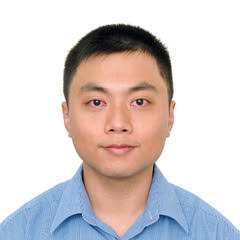
My current research focuses on developing new computational tools to design informative single-cell experiments that account for both intrinsic noise and measurement uncertainty. These computational tools will be tested and refined on real single-cell experiments based on smFISH probes and protocols developed by Dr. Linda Forero Quintero. Other interests and projects: parameter estimation, uncertainty quantification, model reduction for stochastic gene expression models, single-cell stochastic analysis software development, microbiome data science.
Email: Huy.Vo at colostate.edu
Selected Preprints and Publications:
- D. Kalb, H. D. Vo, S. Adikari, E. Hong-Geller, B. Munsky, J. Werner. Visualization and Modeling of Inhibition of IL-1β and TNFα mRNA Transcription at the Single-Cell Level. Submitted. BioRxv link.
- T. A. Catanach, H. D. Vo, B. Munsky. Bayesian inference of Stochastic reaction networks using Multifidelity Sequential Tempered Markov Chain Monte Carlo. International Journal for Uncertainty Quantification 10 (6), 2020. DOI: 10.1615/Int.J.UncertaintyQuantification.2020033241.
- H. D. Vo, Z. R. Fox, A. Baetica, B. Munsky. Bayesian Estimation for Stochastic Gene Expression Using Multifidelity Models. Physical Chemistry B 123 (10), 2217-2234, 2019. DOI: 10.1021/acs.jpcb.8b10946.
Graduate Students
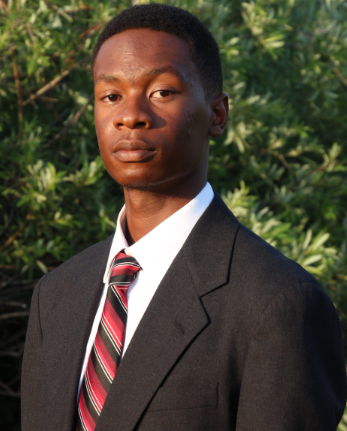 Joshua Cook
Joshua Cook
As an undergraduate pursuing dual degrees in CBE and BIOM, I have worked with the Munsky team on the Stochastic Identification Toolkit (SSIT), Finite State Projection (FSP) in transcription models and using image analysis codes. After graduation (May 2021), I will continue to work with the Munsky Group as a graduate student pursuing a Masters degree in Bioengineering. In the long run, I want to continue building software and coding skills to apply them in understanding biological systems.
Michael May
My work focuses on branching the gap between theoretical quantitative biology and traditional microbiology wet-labs. Currently, I am working on using the variability predicted in stochastic models as a tool to help identify genes imaged though new techniques developed by a collaborator at CSU. My background is in biomedical and chemical engineering and my interests are in modeling and simulation.
Email: michael.may at rams.colostate.edu
Will Raymond
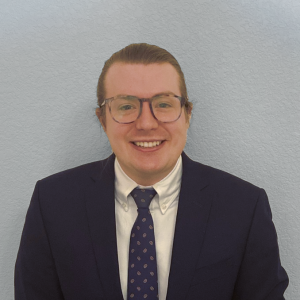 I graduated in May 2017 from Colorado State University with a Bachelors in Biomedical Engineering and a Bachelors in Chemical and Biological Engineering.
I graduated in May 2017 from Colorado State University with a Bachelors in Biomedical Engineering and a Bachelors in Chemical and Biological Engineering.
I have been a PhD student in Dr. Munsky's lab since 2019 working on a plethora of projects. I am currently the lead developer on the rSNAPsim, an open source Python TASEP mRNA simulation package. In addition to that, I also work on implementing machine learning for nascent chain tracking fluorescent spot identification with the goal of differentiating different mRNA species or translation models from live cell movies.
My primary area of interest is the intersection of machine learning, bioinformatics, and RNA biology. I am most excited about novel ncRNA discovery and advancements in structural identification and disease classification with machine learning.
Email: wsraymon@rams.colostate.edu / williamscottraymond@gmail.com
Website: https://will-raymond.github.io/will_raymond_cv/
Publications:
- W. Raymond, S. Ghaffari, L. Aguilera, E. Ron, T. Morisaki, Z. Fox, M. May, T. Stasevich, B. Munsky. (2023) Using mechanistic models and machine learning to design single-color multiplexed nascent chain tracking experiments. Frontiers in Cell and Developmental Biology. 11, 2296-634X. https://doi.org/10.3389/fcell.2023.1151318
- L. Forero, W. Raymond, T. Handa, M. Saxton, T. Morisaki, B. Munsky, T. Stasevich. (2021) Live-cell imaging reveals the spatiotemporal organization of endogenous RNA polymerase II phosphorylation at a single gene. Nature Communications. 12, 3158. https://doi.org/10.1038/s41467-021-23417-0
- L. Aguilera, W. Raymond, Z. Fox, M. May, E. Djokic, T. Morisaki, T. Stasevich, B. Munsky. (2019) Computational design and interpretation of single-RNA translation experiments. PLOS Computational Biology. 15(10): e1007425. https://doi.org/10.1371/journal.pcbi.1007425
- L. Weber, W. Raymond, and B. Munsky. (2018) Identification of gene regulation models from single-cell data. Physical Biology, 15 (5), 055001. https://doi.org/10.1088/1478-3975/aabc31
- L. Weber, W. Raymond, and B. Munsky, "Tutorial on the Identification of Gene Regulation Models from Single-Cell Data," in Quantitative Biology: Theory, Computational Methods, and Models, B. Munsky, W. S. Hlavacek, and L. S. Tsimring, Ed. Cambridge, MA: The MIT Press, 2018, pp. 599-616.
Eric Ron
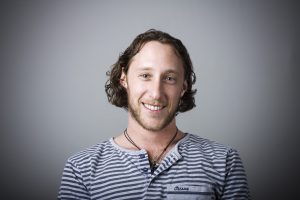
I received my undergraduate degree in biochemistry from Colorado State University in 2013. I then worked as an analytical chemist for two years in industry before working as product development lead and cofounder of a start-up company until 2018. Currently, I am working on my Master’s Degree and am interested in single-cell microscopy and the integration of stochastic models with transcription and translation dynamics. In my current work I am helping with the optimization of smFISH experiments and assisting with the automation of image processing.
Email: Eric.Ron@colostate.edu
Lisa Weber
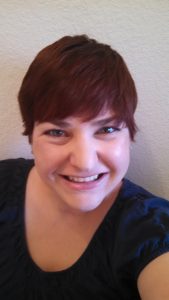 I received an MS in Mechanical Engineering with a biological emphasis from the University of Denver in 2012, and have engineering experience in multiple industries (Oil and Gas, Pharmaceuticals, and Aerospace). I am currently an Instructor and a PhD Candidate in Chemical Engineering at Colorado State University. My research involves performing computational modeling of various biological processes, including aspects of gene expression and DNA/Oligonucleotide binding interactions in relation to multiple experimental variables, integrating computational methods with experimental data. I also perform research on implementing and teaching implicit bias, inclusion, and diversity-related topics to undergraduate engineering students. In addition, I was a Graduate Teaching Fellow from 2017-2019, and I am currently the Instructor for CBE 160: Introduction to MATLAB for Chemical and Biological Engineers (from 2018-Present).
I received an MS in Mechanical Engineering with a biological emphasis from the University of Denver in 2012, and have engineering experience in multiple industries (Oil and Gas, Pharmaceuticals, and Aerospace). I am currently an Instructor and a PhD Candidate in Chemical Engineering at Colorado State University. My research involves performing computational modeling of various biological processes, including aspects of gene expression and DNA/Oligonucleotide binding interactions in relation to multiple experimental variables, integrating computational methods with experimental data. I also perform research on implementing and teaching implicit bias, inclusion, and diversity-related topics to undergraduate engineering students. In addition, I was a Graduate Teaching Fellow from 2017-2019, and I am currently the Instructor for CBE 160: Introduction to MATLAB for Chemical and Biological Engineers (from 2018-Present).
Email: llweber@rams.colostate.edu
Publications:
- L. Weber, W. Raymond, and B. Munsky. (2018) Identification of gene regulation models from single-cell data. Physical Biology, 15 (5), 055001. https://doi.org/10.1088/1478-3975/aabc31
- L. Weber, W. Raymond, and B. Munsky, "Tutorial on the Identification of Gene Regulation Models from Single-Cell Data," in Quantitative Biology: Theory, Computational Methods, and Models, B. Munsky, W. S. Hlavacek, and L. S. Tsimring, Ed. Cambridge, MA: The MIT Press, 2018, pp. 599-616.
- M.S. Thesis: "Pulmonary particle deposition in relation to age, body weight, and species"
- Deposition based on therapeutic volume delivered and determined by static probabilistic mathematical model. Evaluation of deposition based on variable breathing rates. Sensitivity analysis performed to determine sensitivity of particle deposition to changes in particle size and breathing rate.
- Worden RN, Weber LM, and Lengsfeld CS. September 2012. Optimal Parameters for Pulmonary Particle Deposition as a Function of Age.ICLASS 2012, 12th International Conference on Liquid Atomization and Spray Systems. Heidelberg, Germany.
- Weber LM and Lengsfeld CS. May 2011. Spray Nebulizer Deposition Efficiency as a Function of Age. ILASS Americas, 23rd Annual Conference on Liquid Atomization and Spray Systems, Ventura, CA (Best Conference Paper Finalist).
- Weber LM and Lengsfeld CS. May 2011. Spray Nebulizer Deposition Efficiency Impact of Species. ILASS Americas, 23rd Annual Conference on Liquid Atomization and Spray Systems, Ventura, CA.
Undergraduate Students
Joshua Cook (B.S. in Chemical & Biological Engineering and Biomedical Engineering, May 2021).
Katie Davis (B.S. in Chemical & Biological Engineering and Biomedical Engineering, May 2021).
Rachel Keating (B.S. in Chemical & Biological Engineering and Biomedical Engineering, May 2021).
Stuart McKnight (B.S. in Chemical & Biological Engineering and Biomedical Engineering, May 2021). While with the Munsky group, Stuart worked on the Stochastic System Identification Toolkit (SSIT) and on the application of machine learning techniques to microbiome data. After graduation, Stuart will be working with Terumo BCT as a Graduate Intern for the Disposables Product Sustainment Engineering Team. In the long term, Stuart hopes to continue working with product development and move into system automation and integration as well as build some software development skills.
Alumni
Undergraduate Student Alumni:
- Elliot Djokic, Undergraduate, Chemical and Biological Engineering and Biomedical Engineering (Dual B.S. Degrees, 2020). Now a Systems Engineer at Epic.
- Charis Ellis, Undergraduate, Chemical and Biological Engineering (B.S., 2019). Now a CVD Shift Process Engineer at Micron Technology, Inc.
- Zach Haigh, Undergraduate, Chemical and Biological Engineering and Biomedical Engineering (Dual B.S. Degrees, 2020). Now a Ph.D. student at University of Minnesota.
- Chase Hunter, Undergraduate, Chemical and Biological Engineering (B.S., 2017). Now a Defect Analysis Engineer at Micron Technology, Inc.
- Torin Moore, Undergraduate, Chemical and Biological Engineering and Biomedical Engineering (Dual B.S. Degrees, 2020).
- Charlotte Mitchell, Undergraduate, Chemical and Biological Engineering and Biomedical Engineering (Dual B.S. Degrees, 2017). Now a Global Strategist at Raytheon.
- Lucas Suazo, Undergraduate, Chemical and Biological Engineering and Biomedical Engineering (Dual B.S. Degrees, 2016). Now at Stanford Medical School.
Graduate Student Alumni
- Zachary Fox (Ph.D., 2019), Now a postdoc in the Center for Non Linear Studies and Los Alamos National Laboratory.
- Mohammad Tanhaemami (M.S., 2020), Now a Bioinformatics Analyst at Dana Farber Cancer Institute.
- Jaron Thompson (M.S., 2020), Now a Ph.D. Student in Chemical and Biological Engineering at University of Wisconsin, Madison.
Postdoc Alumni
- Douglas Shepherd , Postdoc, Now Assistant Professor of Physics at Arizona State University